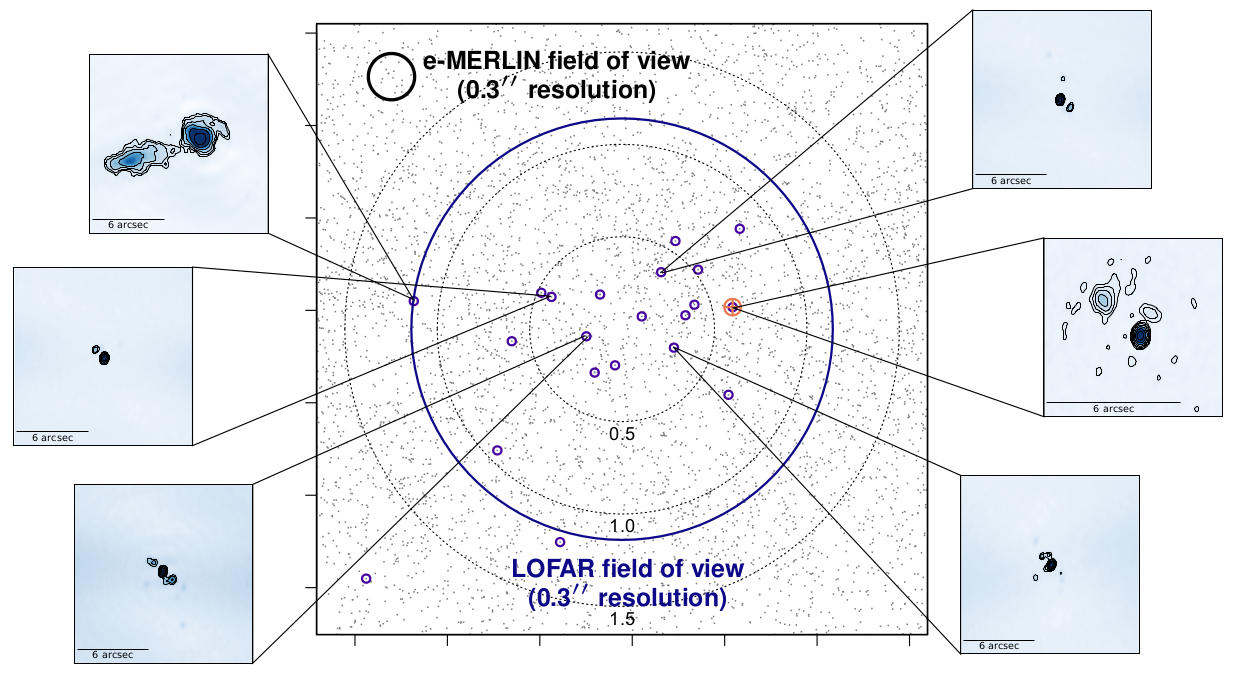CEA News, October 2020
CEA astronomer awarded Future Leaders Fellowship
Leah Morabito, an Assistant Professor at the Centre for Extragalactic Astronomy, has been awarded a Future Leaders Fellowship, funded by UKRI. The Fellowship comes with funding for a PDRA and a PhD student over the next four years.
 The field of view achievable using high-resolution imaging techniques that Leah developed, for a single observation. The e-MERLIN field of view is shown for comparison. The points in the background show the location of radio sources in this field, and zoom-in cutouts reveal the sub-arcsecond structure in a collection of sources. All cutout images were made automatically by a pipeline Leah has developed over the past few years, which will feature in an upcoming publication. (Image copyright L. Morabito)
The field of view achievable using high-resolution imaging techniques that Leah developed, for a single observation. The e-MERLIN field of view is shown for comparison. The points in the background show the location of radio sources in this field, and zoom-in cutouts reveal the sub-arcsecond structure in a collection of sources. All cutout images were made automatically by a pipeline Leah has developed over the past few years, which will feature in an upcoming publication. (Image copyright L. Morabito)
Leah and her team will work on a project called "Zooming in on feedback in active galaxies: the first high resolution radio survey" to advance our understanding of the relationship between active super-massive black holes (active galactic nuclei; AGN) and the galaxies they live in. They will use novel techniques to survey the low-frequency radio sky at sub-arcsecond resolution, enabling them to separate and simultaneously quantify the radio emission from super-massive black holes and the star formation in their host galaxies. The observations and measurements are quite challenging, but they will be a key step forward in understanding how super-massive black holes impact galaxy evolution.
The work will be carried out using the LOw Frequency ARray (LOFAR), a phased-array dipole telescope with stations spread all across Europe. Although other radio telescopes can achieve high resolution at GHz frequencies, LOFAR is the only telescope that can do so at MHz frequencies (just above the FM radio band). LOFAR also has a unique field of view -- for example, e-MERLIN has a similar resolution but LOFAR's field of view is twenty times larger (see figure). This will enable Leah and her team to separate radio emission from star formation and super-massive black hole activity for the largest ever sample of AGN, using a technique developed at higher radio frequencies, which Leah has been adapting for MHz frequencies.

